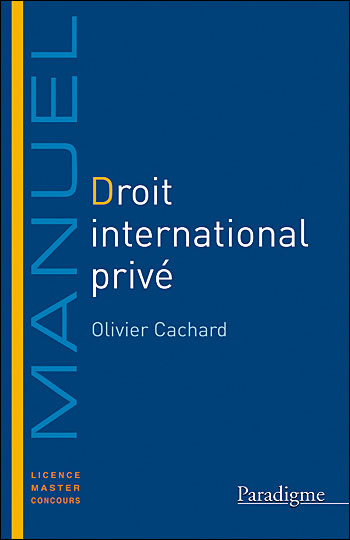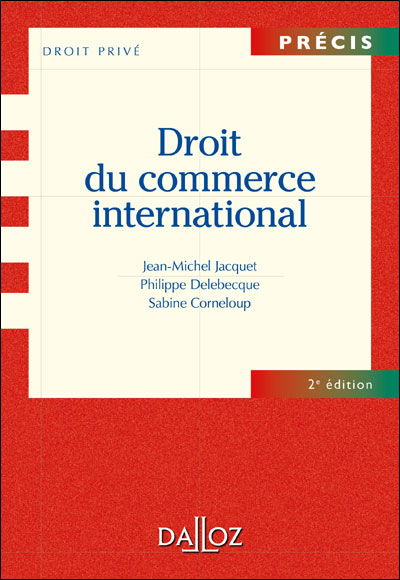Which court has jurisdiction over liability actions against banks in relation to enforcement measures? In Europe, does such action fall under Article 22 of the Brussels I Regulation?
 In April this year, the French Supreme court for private and criminal matters (Cour de cassation) delivered an interesting judgment in this respect. A French creditor had obtained a judgment from the Paris court of appeal ordering her debtor to pay him monies. The creditor then sought to enforce the judgment in Ivory coast, where he had been able to locate a bank account opened in the name of the debtor. He thus contacted a local enforcement officer (huissier de justice) who carried out an attachment (saisie-attribution) over the bank debt. The bank, Banque internationale pour le commerce et l’industrie en Côte d’Ivoire, declared that it held CFA Franc 11 million (€ 16,700).
In April this year, the French Supreme court for private and criminal matters (Cour de cassation) delivered an interesting judgment in this respect. A French creditor had obtained a judgment from the Paris court of appeal ordering her debtor to pay him monies. The creditor then sought to enforce the judgment in Ivory coast, where he had been able to locate a bank account opened in the name of the debtor. He thus contacted a local enforcement officer (huissier de justice) who carried out an attachment (saisie-attribution) over the bank debt. The bank, Banque internationale pour le commerce et l’industrie en Côte d’Ivoire, declared that it held CFA Franc 11 million (€ 16,700).
 However, the debtor immediately challenged the validity of the attachment before an Abidjan court on the ground that it did not comport with of OHADA law (articles 160 and 34 of the relevant statute). The court set aside the attachment. The creditor appealed, but did not wait for the result to ask the huissier to carry out a second attachment which would this time not violate local enforcement law. When the huissier did, however, he was told by the bank that there was only CFA Franc 3000 (€ 4.57) on the account. Eventually, the Abidjan Court of appeal confirmed that the first attachment was a nullity.
However, the debtor immediately challenged the validity of the attachment before an Abidjan court on the ground that it did not comport with of OHADA law (articles 160 and 34 of the relevant statute). The court set aside the attachment. The creditor appealed, but did not wait for the result to ask the huissier to carry out a second attachment which would this time not violate local enforcement law. When the huissier did, however, he was told by the bank that there was only CFA Franc 3000 (€ 4.57) on the account. Eventually, the Abidjan Court of appeal confirmed that the first attachment was a nullity.
I am not sure whether, under OHADA law, the bank was meant to freeze the debt for the time of the challenge of the validity of the attachment. In any case, the creditor decided to sue the bank and initiated a quasi-delictual (i.e. for negligence) action before French courts. As far as jurisdiction is concerned, the plaintiff relied on 14 of the Civil code which grants jurisdiction to French courts for all actions initiated by a French national. For 40 years, the Cour de cassation has ruled that Article 14 and 15 of the Civil of code apply to all claims, except claims over real property and enforcement. The issue here was of course whether a liability action against a bank belongs to the enforcement of decisions. In a judgment of 14 April 2010, the Cour de cassation held that it does, and declined jurisdiction.
l’article 14 du code civil, qui permet au plaideur français d’attraire un étranger devant les juridictions françaises, doit être exclu pour des demandes relatives à des voies d’exécution pratiquées hors de France ; qu’ayant retenu que l’action engagée par M. X… contre la BICI CI découlait directement des voies d’exécution pratiquées entre les mains de celle ci en Côte d’Ivoire, elle en a déduit, à bon droit, que M. X… ne pouvait se prévaloir de ce texte, peu important que la régularité de la saisie litigieuse n’eût pas été contestée
Rumour has it that the main goal of the court was to limit the scope of Article 14 and 15. From a European perspective, however, this might be an unfortunate judgment. To which extent does it inform what the position of the court would be with respect to Article 22 of the Brussels I Regulation? A short (but maybe incomplete) survey of European scholarship shows that many writers have argued, in particular in Germany and France, that liability actions against banks should not fall within the scope of Article 22. Or should they?
 Professor Olivier Cachard, who is the Dean of the Law Faculty of Nancy, has recently published a book on French private international law.
Professor Olivier Cachard, who is the Dean of the Law Faculty of Nancy, has recently published a book on French private international law. The second edition of
The second edition of 
 In April this year, the French Supreme court for private and criminal matters (Cour de cassation) delivered an interesting
In April this year, the French Supreme court for private and criminal matters (Cour de cassation) delivered an interesting  However, the debtor immediately challenged the validity of the attachment before an Abidjan court on the ground that it did not comport with of OHADA law (articles 160 and 34 of the relevant statute). The court set aside the attachment. The creditor appealed, but did not wait for the result to ask the huissier to carry out a second attachment which would this time not violate local enforcement law. When the huissier did, however, he was told by the bank that there was only CFA Franc 3000 (€ 4.57) on the account. Eventually, the Abidjan Court of appeal confirmed that the first attachment was a nullity.
However, the debtor immediately challenged the validity of the attachment before an Abidjan court on the ground that it did not comport with of OHADA law (articles 160 and 34 of the relevant statute). The court set aside the attachment. The creditor appealed, but did not wait for the result to ask the huissier to carry out a second attachment which would this time not violate local enforcement law. When the huissier did, however, he was told by the bank that there was only CFA Franc 3000 (€ 4.57) on the account. Eventually, the Abidjan Court of appeal confirmed that the first attachment was a nullity.